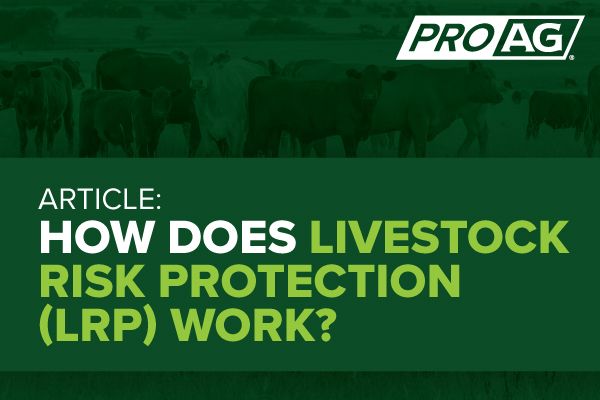More About Bagley Risk Management
More About Bagley Risk Management
Blog Article
Specialist Guidance on Threat Evaluation and LRP Insurance Policy Solutions

The Relevance of Risk Analysis
Effective danger evaluation is fundamental in the decision-making process of any kind of company, assisting strategic preparation and resource allotment. By methodically recognizing, examining, and focusing on potential threats, businesses can expect difficulties, take advantage of chances, and make notified selections to achieve their objectives. Danger evaluation allows organizations to proactively address vulnerabilities, mitigate hazards, and optimize their risk management methods.
Among the vital advantages of danger evaluation is its duty in enhancing operational effectiveness. By recognizing the prospective threats that could influence various aspects of the organization, organizations can enhance processes, allocate sources more properly, and decrease the probability of expensive disturbances. Furthermore, danger assessment enables firms to follow governing needs, secure their track record, and construct trust with stakeholders.
Comprehending Potential Losses
To understand the effect of risk assessment, it is essential to understand the potential losses that can dramatically impact an organization's operations and financial stability. Potential losses can develop from different sources, including natural disasters, economic declines, operational failures, governing changes, and cybersecurity breaches. These losses can cause straight expenses such as home damages, legal expenditures, and fines, in addition to indirect prices like reputational damage and loss of market share.
Understanding potential losses entails performing a complete analysis of the dangers that might materialize and estimating the financial influence they might carry the company. By measuring these possible losses, companies can prioritize risk reduction efforts and designate resources successfully. Moreover, a comprehensive understanding of potential losses makes it possible for organizations to make educated decisions when selecting risk management strategies, such as purchasing insurance protection or carrying out danger control steps. Bagley Risk Management.
Fundamentally, by recognizing and understanding potential losses, companies can proactively manage threats and safeguard their lasting sustainability and success.
Function of LRP Insurance Solutions
The combination of LRP insurance remedies within an organization's risk monitoring structure boosts durability and fortifies monetary security versus unexpected hardships. LRP, or Loss Recovery Product, insurance solutions play a crucial function in reducing the influence of potential losses by providing economic protection and assistance in times of dilemma. These insurance remedies are tailored helpful hints to fulfill the particular demands of services, supplying protection for different threats such as residential or commercial property damage, organization disruption, responsibility claims, and a lot more.
By transferring the financial risk to an insurance service provider, organizations can focus on their core procedures with greater peace of mind, knowing that they are safeguarded against considerable financial losses. Furthermore, LRP insurance policy solutions can enhance an organization's threat administration method by supplementing existing risk mitigation procedures and guaranteeing thorough security across all locations of possible susceptability.
Identifying Secret Threats
In the process of risk evaluation, a crucial action includes recognizing essential threats that have the prospective to affect a company's operations and monetary security. Recognizing vital threats needs a thorough examination of internal and outside aspects that could present hazards to the company's purposes. Internal risks might consist of operational ineffectiveness, compliance issues, or human source difficulties, while external risks might encompass economic recessions, regulatory changes, or natural disasters.

Additionally, key risks should be regularly reviewed and upgraded to align with the vibrant organization environment. This proactive method allows organizations to stay ahead of possible dangers and safeguard their long-lasting success.
Picking the Right Protection
Having actually identified the vital risks that can influence a company's operations and why not find out more financial security, the next essential step includes very carefully selecting the best protection to properly handle and reduce these dangers. When it pertains to selecting the best coverage, organizations require to consider their details threat exposure, financial capabilities, and tactical goals. It is important to carry out a comprehensive analysis of the available insurance coverage alternatives to make sure that the selected coverage straightens with the company's risk management objectives.

Organizations must function carefully with experienced insurance policy experts to assess their threat profiles and determine the most ideal insurance policy products to resolve their demands. Customizing insurance policy coverage to details risks can aid optimize defense while lessening unneeded expenses. Additionally, organizations should evaluate policy conditions carefully to recognize the degree of protection supplied and any type of possible exclusions that might impact their risk mitigation techniques.
Verdict
Finally, threat evaluation is crucial in recognizing possible losses and choosing the right LRP insurance policy services. By recognizing crucial dangers, businesses can reduce economic effects and shield their properties. It is necessary to thoroughly analyze and analyze threats to ensure ideal insurance coverage is in location. Professional support can aid navigate the intricacies of threat analysis and insurance services, giving organizations with the necessary devices to effectively take care of and alleviate dangers.
Specialist guidance plays a critical role in this procedure, supplying useful insights right into determining and evaluating threats, as well as strategically choosing proper insurance policy coverage customized to reduce those dangers efficiently. A detailed understanding of prospective losses makes it possible for companies to make educated decisions when selecting risk monitoring techniques, such as buying insurance policy protection or carrying out risk control actions.

Report this page